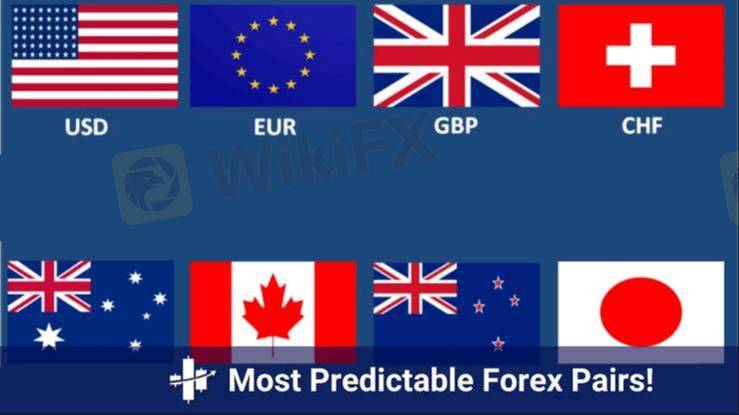
2025-04-28 12:38
IndustryFX prediction by clusteringeconomic shocks
#CurrencyPairPrediction
Predicting Forex (FX) movements by clustering economic shocks involves identifying and grouping similar types of unexpected economic events and analyzing their historical impact on currency pairs to anticipate future reactions to similar shocks. This approach recognizes that not all economic news has the same effect and that the market's response can be contingent on the nature and magnitude of the surprise.
The process typically begins with identifying a wide range of economic indicators and news events that can potentially influence currency markets, such as inflation reports, employment data, GDP releases, central bank announcements, trade balances, and geopolitical events. The "shock" is defined as the deviation of the actual reported figure or event outcome from market expectations (often based on consensus forecasts).
Next, clustering techniques are applied to these economic shocks based on their characteristics. This could involve grouping shocks by the type of economic indicator (e.g., inflation surprises, employment surprises), the direction and magnitude of the surprise (e.g., large positive surprise in GDP, small negative surprise in CPI), the country or region affected, or even the market's initial reaction. More sophisticated clustering algorithms might use machine learning to identify underlying patterns in how different types of economic surprises tend to co-occur or lead to similar FX market responses.
Once the clusters of economic shocks are identified, historical FX price action following these types of shocks is analyzed. This involves examining the average movement, volatility, and direction of specific currency pairs after the occurrence of shocks within each cluster. Statistical methods can be used to determine the typical market reaction and the associated probabilities.
For live prediction, as new economic data or events occur and the surprise element is quantified, the shock can be assigned to one of the previously identified clusters. Based on the historical analysis of that cluster, traders can then anticipate the likely direction and potential magnitude of the reaction in relevant currency pairs.
This approach offers several potential benefits. It moves beyond simply reacting to individual news releases and instead considers the broader context of similar historical events. By understanding how the market has reacted to specific types of shocks in the past, traders might be able to make more informed predictions about future movements. However, it's crucial to acknowledge that the Forex market is dynamic, and the way it reacts to economic shocks can evolve over time. Therefore, continuous monitoring and updating of the shock clusters and their associated historical responses are necessary. Additionally, the effectiveness of this approach can depend on the quality of the economic data, the accuracy of market expectations, and the stability of the relationships between specific types of shocks and currency movements.
Like 0
venue753
Trader
Hot content
Industry
Event-A comment a day,Keep rewards worthy up to$27
Industry
Nigeria Event Giveaway-Win₦5000 Mobilephone Credit
Industry
Nigeria Event Giveaway-Win ₦2500 MobilePhoneCredit
Industry
South Africa Event-Come&Win 240ZAR Phone Credit
Industry
Nigeria Event-Discuss Forex&Win2500NGN PhoneCredit
Industry
[Nigeria Event]Discuss&win 2500 Naira Phone Credit
Forum category

Platform

Exhibition

Agent

Recruitment

EA

Industry

Market

Index
FX prediction by clusteringeconomic shocks
 Thailand | 2025-04-28 12:38
Thailand | 2025-04-28 12:38#CurrencyPairPrediction
Predicting Forex (FX) movements by clustering economic shocks involves identifying and grouping similar types of unexpected economic events and analyzing their historical impact on currency pairs to anticipate future reactions to similar shocks. This approach recognizes that not all economic news has the same effect and that the market's response can be contingent on the nature and magnitude of the surprise.
The process typically begins with identifying a wide range of economic indicators and news events that can potentially influence currency markets, such as inflation reports, employment data, GDP releases, central bank announcements, trade balances, and geopolitical events. The "shock" is defined as the deviation of the actual reported figure or event outcome from market expectations (often based on consensus forecasts).
Next, clustering techniques are applied to these economic shocks based on their characteristics. This could involve grouping shocks by the type of economic indicator (e.g., inflation surprises, employment surprises), the direction and magnitude of the surprise (e.g., large positive surprise in GDP, small negative surprise in CPI), the country or region affected, or even the market's initial reaction. More sophisticated clustering algorithms might use machine learning to identify underlying patterns in how different types of economic surprises tend to co-occur or lead to similar FX market responses.
Once the clusters of economic shocks are identified, historical FX price action following these types of shocks is analyzed. This involves examining the average movement, volatility, and direction of specific currency pairs after the occurrence of shocks within each cluster. Statistical methods can be used to determine the typical market reaction and the associated probabilities.
For live prediction, as new economic data or events occur and the surprise element is quantified, the shock can be assigned to one of the previously identified clusters. Based on the historical analysis of that cluster, traders can then anticipate the likely direction and potential magnitude of the reaction in relevant currency pairs.
This approach offers several potential benefits. It moves beyond simply reacting to individual news releases and instead considers the broader context of similar historical events. By understanding how the market has reacted to specific types of shocks in the past, traders might be able to make more informed predictions about future movements. However, it's crucial to acknowledge that the Forex market is dynamic, and the way it reacts to economic shocks can evolve over time. Therefore, continuous monitoring and updating of the shock clusters and their associated historical responses are necessary. Additionally, the effectiveness of this approach can depend on the quality of the economic data, the accuracy of market expectations, and the stability of the relationships between specific types of shocks and currency movements.
Like 0
I want to comment, too
Submit
0Comments

There is no comment yet. Make the first one.

Submit
There is no comment yet. Make the first one.